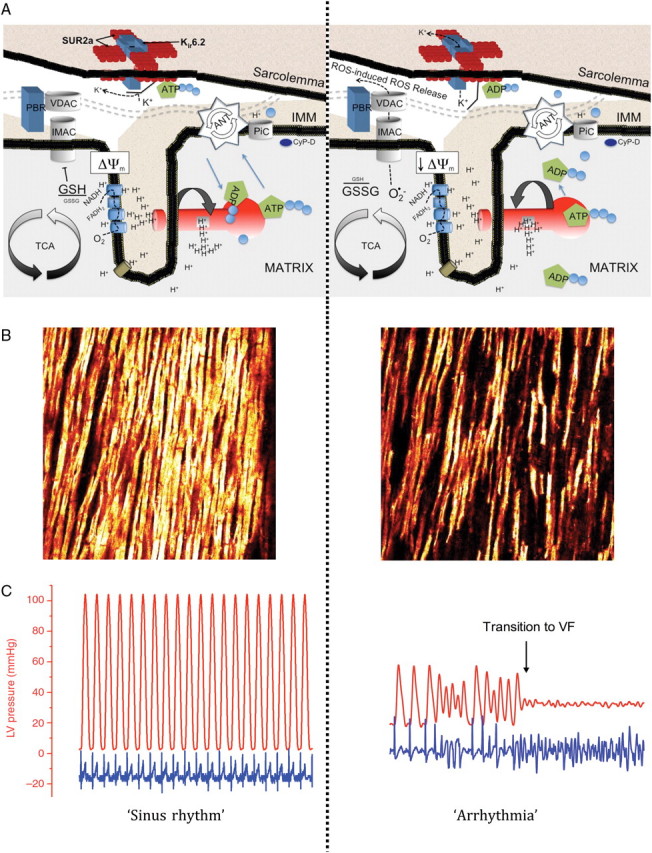Figure 1.

Cascade of events where the opening of energy-dissipating anion channels in the mitochondrial inner membrane (IMM) leads to a depolarization of the mitochondrial network, opening of sarcKATP channels, and ultimately transition to arrhythmia in the intact organ. (A) Schematic depiction of the IMM under conditions of normoxia associated with sinus rhythm (left) and during metabolic stress (right). Matrix oxidation is characterized by glutathione oxidation and opening of IMAC, which collapses the ΔΨm, leading to ROS-induced ROS release in the mitochondrial network. Structures for IMAC and the PTP are speculative and based on previous reports.77,166 (B) Two-photon images of ΔΨm in an intact guinea pig heart under normoxic (left) and oxidative (right) conditions. (C) Recordings of LV pressure (red trace) and ECG in a guinea pig heart subjected to normoxic and oxidative conditions. The time course for (B) and (C) are similar for both images, indicating that collapse of ΔΨm was accompanied by transition to fatal ventricular arrhythmia. Panels (B) and (C) are reprinted from Brown et al.75 with permission from Elsevier.
